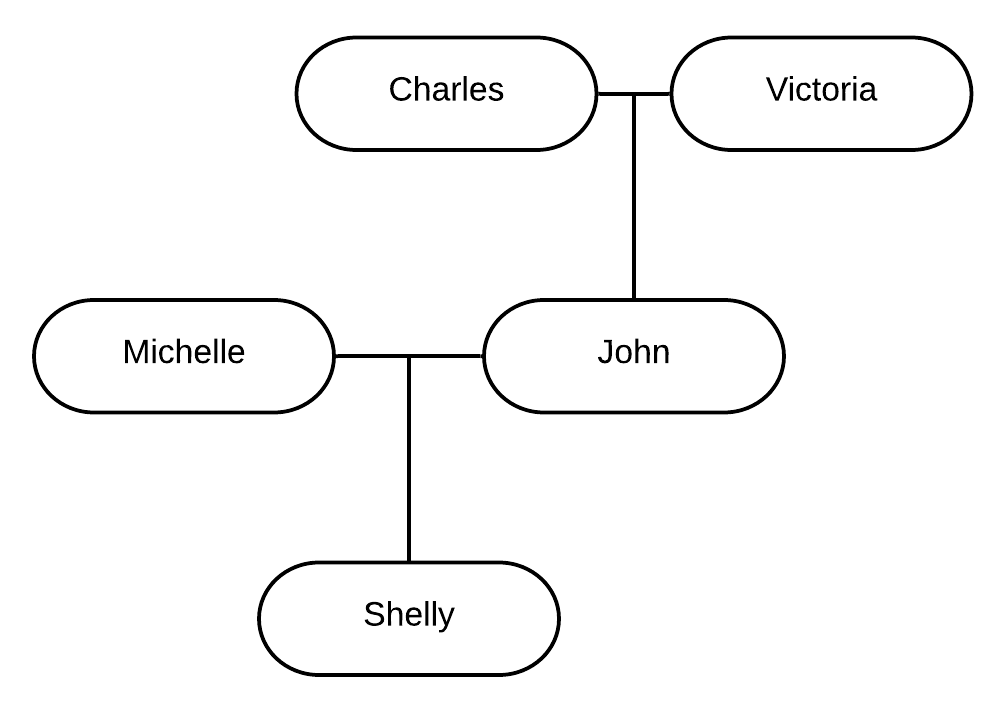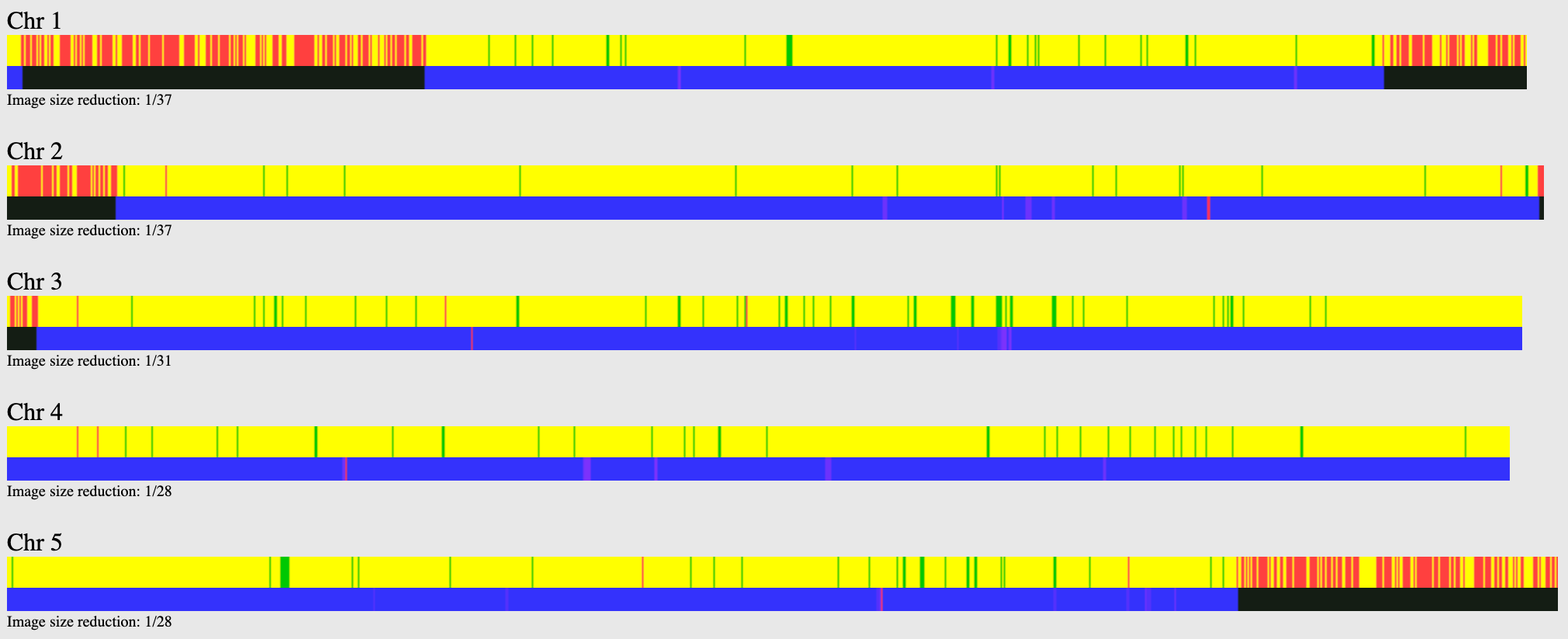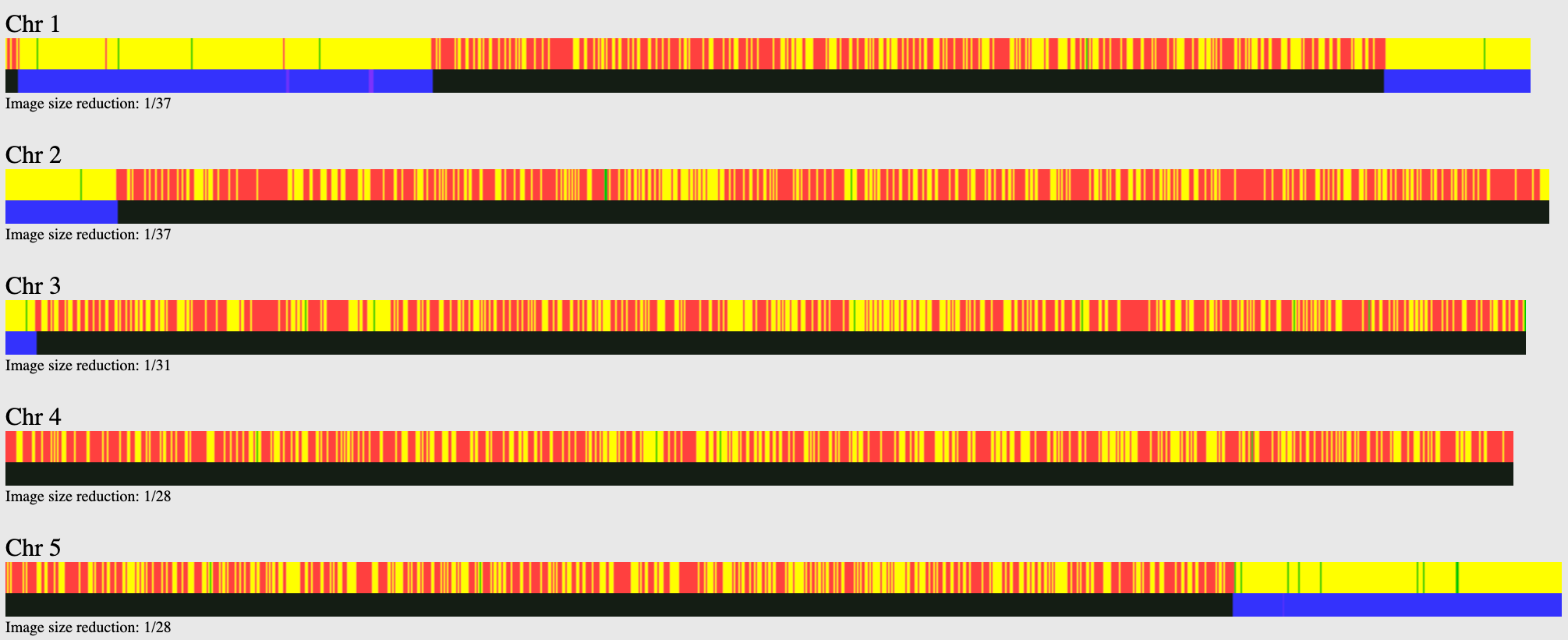In this blog post we will briefly review an extreme Grandparent/Grandchild relationship, where a grandchild appears to share just 9% of her DNA with a paternal grandmother rather than the expected 25%. All information is anonymized.
I’m a little afraid to post this article about an extreme outlier scenario. There is a danger that it could support misinterpretation rather than foster critical thinking. If you have a possible outlier scenario, be sure to try to disprove that it is an outlier situation, rather than simply proceeding as if is an outlier. Avoid confirmation bias!
This is the third post on my blog specifically examining outliers in confirmed relationships:
Is it an Outlier? The Extreme Danger of Confirmation Bias
This was discussed in a previous article about outliers, but it bears repeating.
The danger here, and what I find most people do, is to assume that an unexpected result is actually an OUTLIER. However, it is only an outlier if the two people have the expected genealogical relationship. If those two people have another relationship (in the place or or in addition to the expected relationship), then they are NOT an outlier, they are another relationship. It is VITAL that people determine which scenario it is; are they an outlier or another relationship?
When there is a possible outlier situation, I invoke “The Outlier Protocol.” Specifically, I have to try to determine whether the unexpected shared cM amount is due to the expected relationship actually being an outlier or whether the two people have another relationship. While the goal of the Outlier Protocol is the same for every analysis, the specifics of the analysis will depend upon the relationship involved, among many other factors.
Ignoring The Outlier Protocol and proceeding as if it is simply an outlier scenario is confirmation bias. When a shared cM amount is very low or very high, a red flag is raised and we must do our best to resolve that red flag using a combination of documentary research and additional DNA testing. Anything else is confirmation bias.
The Scenario
I learned about a situation where a mother (Michelle) reported that her daughter (Shelly) shared much less DNA with her paternal grandmother (Victoria) than expected, and far more DNA with her paternal grandfather (Charles) than expected. Here’s the relevant family structure:
Everyone shown above has tested their DNA and transferred their results to GEDmatch Genesis.
What Amount of Shared cM Do We Expect?
We get 50% of our DNA from each parent (the actual amount will vary a bit because of company algorithms, the size of the X chromosome versus the Y chromosome, etc, but it is one copy of each chromosome for 50%). Beyond parent/child, however, relationships vary. For example, at the grandparent level, we know several things:
- You inherit 100% of your DNA from your 4 grandparents;
- You inherit exactly 50% of your DNA from the combination of your two paternal grandparents;
- You inherit exactly 50% of your DNA from the combination of your two maternal grandparents; and
- The amount you receive grandparent in a pair of grandparents will vary within that 50%.
This post is about the variation within the 50% provided a set of grandparents.
I have one example in my own family where a grandchild shares 31.7% with his maternal grandmother and 18.3% with his maternal grandfather. Collectively that is 50%, the same 50% that the grandson’s mother passed down to him.
So, on average we get 25% from each grandparent, although there can be considerable variation.
What Amount of Shared cM Do We Actually See?
Before we jump into how much Shelly shares with each of her paternal grandparents, here are some important facts for the analysis:
- Michelle shares NO DNA with John, Charles, or Victoria.
- Shelly shares 3547 cM with her mother Michelle and 3561 with her father John
- Johns shares 3570 cM with his mother Victoria and 3570 cM with his father Charles
- Shelly shares a TOTAL of 3550 cM with her paternal grandparents Charles and Victoria
- Charles and Victoria share NO DNA.
In other words, nothing about the family relationships are unusual. There’s no unknown or unexpected relationships.
However, Shelly shares the following amounts with her paternal grandparents:
- 657.7 cM (9%) with her paternal grandmother
- 2940.9 cM (41%) with her paternal grandfather
The percentages were calculated by GEDmatch Genesis.
Shelly shares DNA with her paternal grandmother on 13 of her 23 chromosomes (many of which are only small segments on the tips of the chromosomes), and shares DNA with her paternal grandfather on all 23 chromosomes (most of which are large segments or entire chromosomes).
Both of these values are very far outside the range of the Shared cM Project.
I initially told Michelle, with whom I corresponded, that this was “essentially impossible” and that there must be some other explanation. Not only is it unlikely to occur, it is unlikely to actually be detected. Given the size of the human population and the size of the databases, there are actually very few grandparent/grandchild relationships tested.
Visualizing John’s Recombination (or lack thereof!)
Now, we know this is all John’s fault, right? John recombined the chromosomes that Charles and Victoria gave him, before he passed them down to Shelly. Based solely on the numbers, it appears that he didn’t do much recombination at all. And thanks to GEDmatch, we can visualize that lack of recombination. The pattern of matching shown by visualizing the recombination also helps confirm that Charles and Victoria are, in fact, the mating pair that produced John.
How do we visualize recombination? We simply compare Shelly to one or both of her grandparents using a chromosome browser!
Here’s a One-to-One comparison at Genesis of Shelly and her paternal grandfather Charles:
And here is a One-to-One comparison at Genesis of Shelly and her paternal grandmother Victoria:
Do you see the pattern? If the grandfather shares DNA at a spot, the grandmother does not, and vice versa. Everywhere there is a switch from one grandparent to the other, this represents a single recombination point created by John.
Interestingly, there are a total of 22 recombination events created by John, which isn’t far off the average number found in research studies of 26-27 recombination events (see one of my favorite articles of all time: https://journals.plos.org/plosgenetics/article?id=10.1371/journal.pgen.1000648). What happened, however, is that 13 of the 22 recombination events were near the end of the chromosome, resulting in little effect.
Conclusions
This DOES appear to be an extreme outlier situation rather than another explanation such as a different relationship. However, this would have been an extremely difficult case to examine without having all the family members tested, and without having a chromosome browser to review the recombination pattern.
But note that this post is NOT support for outliers. Rather, it is meant to emphasize that when you find a possible outlier, you must utilize “The Outlier Protocol” to determine whether it is an actual outlier or whether there is another explanation. Remember, the goal is to disprove a hypothesis, not to only gather evidence that supports the hypothesis. Anything else is confirmation bias!




Very interesting. John got 50% from each parent. Sort of a “grandpa dominance” conception when “Shelly” was conceived, eh? And it has to be random, right? It happens in a flash, right? Amazing.
Right, when John created a single sperm that became Shelly, he recombined his parent’s DNA. Just random chance. Any other sperm and it would be a different story.
Just an odd question, Blaine…we know it would have been a different outcome with a different sperm…do you think it would be a different outcome with next month’s egg? In other words, are the mothers eggs different every month?
Yes, every sperm and egg will have different recombination. And actually, a woman recombines DNA for her children while she is still in the womb! So our maternal DNA is actually recombined when our mom is growing inside our maternal grandmothers!
My most extreme example is 15% from maternal grandfather and 35% from maternal grandmother. My explanation is that this grandson was the result of pre-implantation screening to avoid a potentially lethal heart disorder. This appears to have resulted in picking a fertilized embryo that was on the far tail of the distribution curve.
Interesting! Do you know if anyone has studied this? Seems like a ripe area for research!
An acquaintance has commented frequently on social media about how unreliable dna testing is. His primary example is that his granddaughter is predicted by Ancestry to be his first cousin. Fits your example perfectly. I have referred him to this blog post.
I hope it is useful!
A prediction of a relationship is no indicator of DNA testing reliability. Blaine’s posts make this clear.
As I point out in another thread, I have a first cousin predicted (by FTDNA) to be my half-sibling. The DNA Painter tool gives only a 0.37% likelihood that she is my first cousin and a 99.63% probability that she is closer than that.
I know why though. Our mutual grandparents were full siblings. We both have a double dose of DNA from their lines.
Always expect the unexpected. There can be genuine outliers and also hanky-panky that can lead to freak results.
Interestingly, I share only 1303 cM with my half brother (at GEDmatch). However my two full brothers share 1932 cM and 1840 cM with that same half brother (at GEDmatch). Another example of an outlier, but I know for sure that we’re half siblings.
Quite a range!
my daughter shares 2312 cMs with her paternal grandfather, and 30% dna that she inherited from him. she shares 1266 cMs with her paternal grandmother, and inherited 16% dna from her. according to the cm tool on dna painter, those cMs are outliers. another interesting thing is that she shares 2296 cMs with my husband’s full youngest brother lol. once again, another outlier. she shares the most with him so far out of the half and full siblings that have tested. no, my husband and his youngest brother are not identical twins. they are a year and 3 months apart. 🙂
This post interested me because I am working with an adoptee (MP) whose top match is another adoptee (JL) sharing over 2100 cM, so half-sibling relationship. MP lives in England, JL in New Brunswick but the biological father named for the MP has a well know New Brunswick Acadian name and was identified as being in the RCAF during WWII. MP was born during the war, JL born a few years after the war. I have found two possibilities for the biological father but DNA results for MP with another person of Acadian background gives me outlier situations in both cases. In one, MP would be a 1st cousin to someone she shares only 121 cM with; in the other case, she would be 2nd cousin to someone she shares 525 cM with. JL, BTW, would share 602 cM with this same person but I haven’t been able to find out if he shares DNA with the potential 1st cousin.
As I said, the surname is very common in the New Brunswick Acadian community but I still wonder how many men we could find with this same name who had been members of the RCAF during WWII.
Is there one of these situations which seems more likely than the other?
Just had another thought regarding my post above. In the 2nd cousin scenario above, the 2nd cousin would be DS. Would it make a difference if the biological father of MP and JL was the son of both a great aunt and a great uncle of DS (ie. sisters married to brothers)?
Strange new phenomenon, those who tested with Ancestry years ago, like my husband and I, and just recently had a parent tested, are seeing many shared matches who share less cMs with their parent than themselves!
Oh sure, at first you assume it a coincidence, both parents are related to this match, but then Ancestry’s website crashes again, server issues and you wonder, why don’t they just charge more for their tests? Why cut back on the amount of DNA analyzed?
I recommend everyone back their trees and DNA data up often, unless the NSA donates some Utah server farm there is no way Ancestry can keep up with their growth.
A bit off topic but I wanted to comment, I’ve learned so much from this site.
Okay, you know this had to be mentioned. The evil twin scenario raises it’s ugly head. Or, I guess one could be ugly and the other beautiful. 🙂 Since the evil twin situation can’t exist between brothers because they inevitably have to share their Y chromosomes, it has to be a brother – sister or a sister – sister event. Of course I’m talking about the sharing of no DNA between full siblings hypothesis that is mentioned in the evil twin tool on GEDmatch.
This post is intended to be a just in fun exercise and not brought forward to foment and argument, so please let’s not argue it. Since there are estimated to be about 3 billion base pairs within the human genome and since we share about 99.9% of those, that leaves about 300 million of them that tend to vary. Of those about 600,000 to 700,000 are tested in the various autosomal DNA tests. Before I continue, these are rough figures mostly mentioned as rules of thumb. These numbers tell us that we don’t even possess the ability to observe a true evil twin scenario yet even if it did exist. However, we could see one that existed at the current genealogical testing level.
So , let’s look at the factors that increase the chances of it happening. According to livescience.com the average male will produce over 525 billion sperm cells in his lifetime. That means that one man just needs to produce 2 sperm cells, that unite successfully with an egg, that are exactly opposite of each other (within 700,000 base pairs) in 22 chromosomes for a brother/sister pair or in 23 chromosomes for a sister/sister pair. If 3 billion men have sex once per week for 60 years we might see that happen, but probably not. I mean the numbers are getting fairly high that it could happen that he did produce 2 such sperm in his lifetime. And, since a man produces 175 times the sperm than there are numbers of base pairs in the entire human genome, we can start to think it might happen eventually. And, since a man produces 750,000 times the sperm than there are numbers of base pairs tested in a genealogical DNA test, we might even be getting hopeful that it might happen. Now we venture into the negative limiting factors.
That same situation has to happen twice to the same man within the number of times that he and their mother have children in their lifetimes. Yep, she’s born with about 1 million ovarian follicles. Of that large reserve she carries she will only ovulate about 300 to 400 egg cells in her lifetime. Of those 300 to 400 cells, maybe if she is very prolific, she might have 15 or even 20 children in her lifetime. And, now our hopes and dreams of having that evil twin event come to fruition are suddenly crushed. It was fun while it lasted.
I don’t have the skills to calculate the odds with all of those variables, but I do believe there’s very little chance of it. Mathematically, it has to be possible, but I doubt the world will last long enough for it to happen. I will say this though. I have seen a lot of people on forums making claims that someone who shares only the barest amount of DNA to be a match with a sibling or even slightly less has to be a half sibling. I think Blaine’s articles here demonstrate that such claims are highly out of line.
Jeff
Would be interesting to see a photo of the granddaughter and grandfather. Wonder if they look very similar.